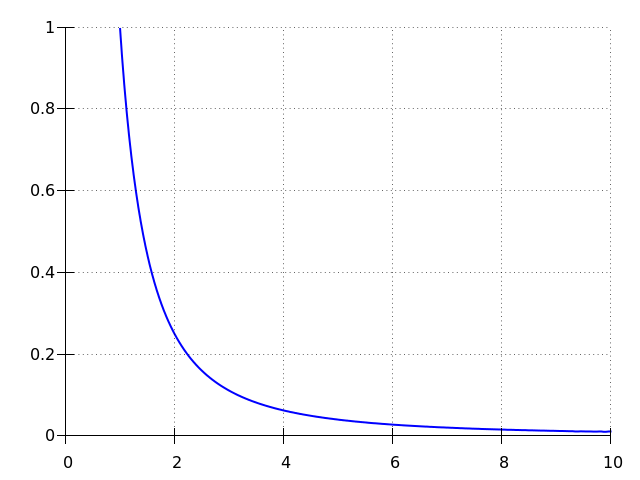Functions: Power functions
 Power functions
Power functions
Let #a=\frac{p}{q}# be a rational number that is not an integer, with integers #p# and #q# unequal to zero and #q\gt0#. Then #x^a# is a function of #x# with domain #\ivco{0}{\infty}# if #a\gt0# and #\ivoo{0}{\infty}# if #a\lt0#. After all, #x^a = \sqrt[q]{x^p}# is the unique number #b\ge0# for which #b^q =x^p# applies.
Even if #a# is not rational, we can define #x^a# on #\ivco{0}{\infty}# if #a\gt0# and on #\ivoo{0}{\infty}# if #a\lt0#. Through numbers of the form # \sqrt[q]{x^p}#, with #\frac{p}{q}# a rational number close to #a#, the number can be approximated as well as needed. Technically, this is a bit more difficult than the rational case.
Power Function
Let #a# be a real number. The function #x^a# of #x# is called the power function with exponent #a#.
If #a=0#, then #x^a# is the constant function, although it is not defined in #0#.
The domain can be chosen in the same way as in the case in which #a# is rational.
If #a\gt0# then it could still be useful to assume #0^a =0#, and hence, expanding the domain of the power function to #\ivco{0}{\infty}#. But if we do not want to endanger the rules for powers stated below, we keep the domain as #\ivoo{0}{\infty}#.
All known rules for fractional powers also apply here.
Rules of calculation for powers
Let #a# and #b# be real numbers and #x# and #y# positive numbers. Then, the following equalities apply.
- #\left(x^a\right)^b = x^{a\cdot b}#
- #\left(x\cdot y\right)^a = x^a\cdot y ^a#
- #x^a\cdot x^b = x^{a+b}#
- #\frac{x^a}{x^b}=x^{a-b}#
- #x^0 = 1#
These rules lead to the following useful properties of power functions. Here we consider #x^a# as a function with domain #\ivoo{0}{\infty}#. If #a# is a non-zero, then the function #\mathbb{R}\setminus\{0\}# (all numbers except #0#) is defined, but then rules as #x^3 = x^{\frac{6}{2}} =\sqrt[2]{x^{6}}# no longer apply because #(-1)^3=-1# and #\sqrt[2]{(-1)^{6}}=1#.
Let #a# be a real number unequal to #0#. The power function #x^a# with domain #\ivoo{0}{\infty}#
- has range #\ivoo{0}{\infty}#,
- is increasing if #a\gt 0# and decreasing if #a\lt0#.
Exclusion #x=0# is necessary because, for example #x^{-1}# now occurs and is equal to #\frac{1}{x}#.
Exclusion #a=0# is necessary because #x^0# is constant function #1#, and hence, only has range #1#.
After all, #x^{-2}# is a function that takes on ever increasing values of #y# for values of #x# close to #0#. For values of #x# bigger than #1#, the values of #y# become increasingly smaller.
Moreover for #x=2# holds #2^{-2}={{1}\over{4}}#. This corresponds with the graph.

Or visit omptest.org if jou are taking an OMPT exam.




